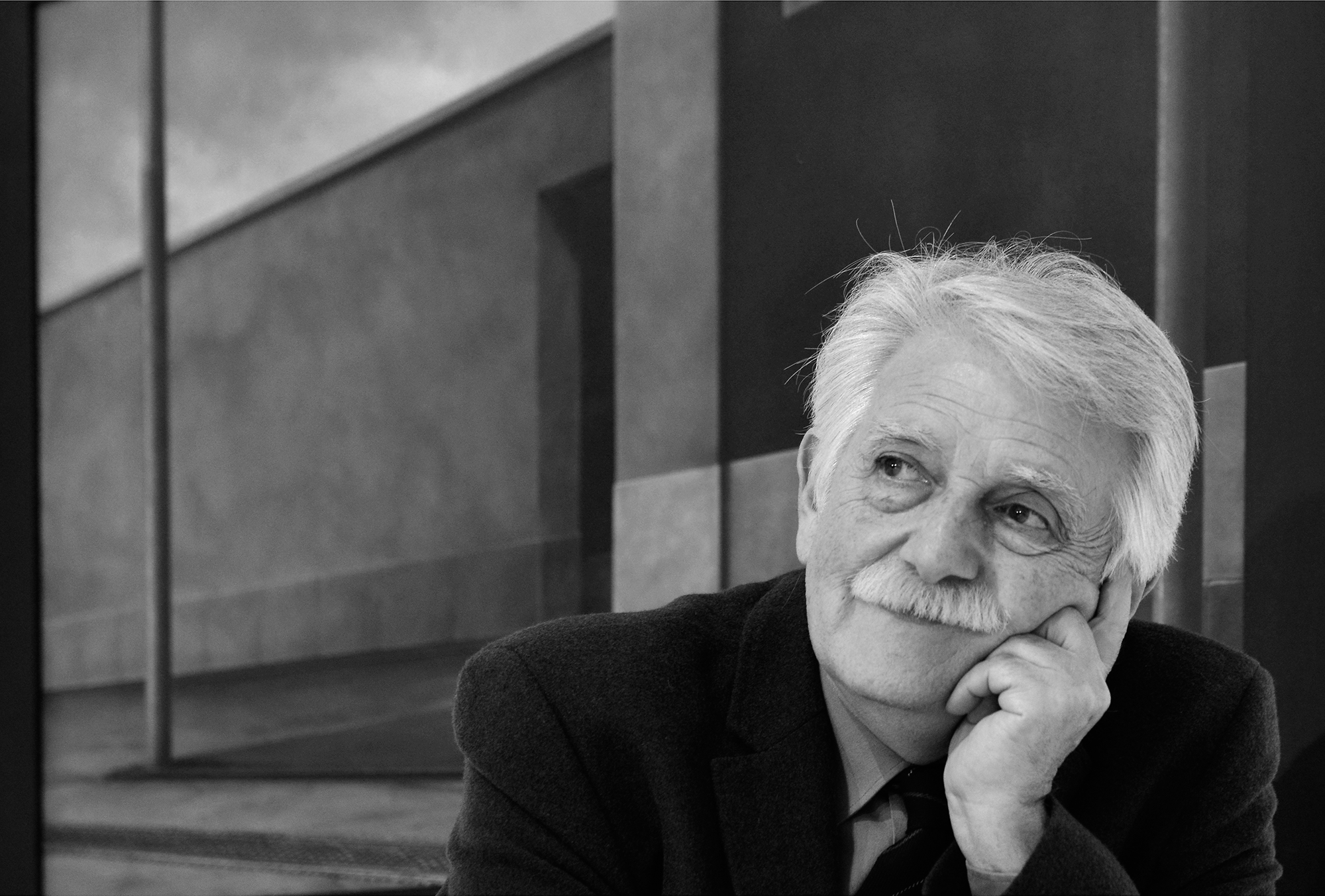ARDUINO CANTÀFORA
BIOGRAPHY

photo © Pier Maulini
Arduino Cantàfora is born in Milan in 1945. From a young age, he develops an interest in organic forms, anatomy, entomology, foundational passions that remain alive during his architecture studies. He quickly discovers the language of drawing, which goes on to become his preferred tool for appropriating forms.
The painter begins his career by getting to grips with the challenging technical aspect of oil painting; he becomes a copyist of Caravaggio. In the second half of the 1960s, the Cathedral of Saint John in Valletta (Malta) entrusts its masterpiece, “The Beheading of Saint John the Baptist” to the National Restoration centre in Rome. Arduino discovers the work during a stay in the capital and is captivated. On a visit to the city, he has the chance to meet the restorer of the painting, who agrees to share all the details of Caravaggio's pictorial technique. The novice embarks on the path of the old master; the technical and artisanal pleasure of painting will never leave him.
During his architecture studies at the Politecnico of Milan, he also perfects the pictorial representation of the architecture of the historic city. His renditions are full of shadows and lights, and unswervingly Caravaggesque in inspiration. The skills that the young painter develops in these years will be valuable during his collaboration with the architect Aldo Rossi (1973-1978) but will also influence his entire production, dominated by the pictorial translation of architecture.
This formative period has the hallmark of a strong relationship with his paternal grandfather: Vincenzo, who works as a locomotive mechanic at Milan Central station, transmits his powerful love for mechanics and steam engines. The famous locomotives.
In 1973, Cantàfora exhibits “La Città analoga” at the Triennale di Milano, currently owned by the Museo del Novecento in the Lombard capital. This large-format painting becomes the manifesto of La Tendenza, an innovative architectural movement that reintegrates elements of 20th-century European rationalism while putting the history of places at the heart of design. La Tendenza is chosen as the subject of a retrospective at the Centre Pompidou in Paris in 2012. Cantàfora once again takes part in the Triennale di Milano, in 1981 and 1988. He is also involved in the Biennale di Venezia of Architecture (in 1978 and 1980) and in the 1984 Biennale of Art.
The period 1985-1986 is marked by his stay in Berlin, at the invitation of the Deutscher Akademischer Austauschdienst (DAAD). The city inspires him to create a series of paintings which are sunsequently exhibited at the Martin-Gropius-Bau Museum in Berlin itself. Two large formats, “Das andere Berlin, 1984” are acquired, in 2006, by the Musée National d’Art Moderne (MNAM) at the Centre Georges Pompidou in Paris. They are part of the 89 works by Cantàfora owned by the Paris Museum.
During the 1990s, the painter creates several stage designs at La Scala in Milan and for other prestigious opera stages such as that of the Aix-en-Provence Festival. His work as a stage designer earns him second place at the Ubu Award, Italy's top prize for the performing arts.
Between 2022 and 2023, he is invited to take part in two collective exhibitions. “Architectures impossibles” (“Impossible Architectures”) at the Musée des Beaux-Arts de Nancy, and, at the Centre Pompidou in Malaga, “Un tiempo propio” (“A time of one’s own”), which highlights two of his large Berlin formats from the collection of the Centre Pompidou in Paris.
Arduino Cantàfora is professor of architecture at the University of Venice (IUAV) from 1982 to 1986, and at the Academy of Architecture of Mendrisio (AAM) from 1998 to 2011 and visiting professor at Yale University in 1988. In 1989, he is appointed full professor at the Ecole Polytechnique Fédérale de Lausanne (EPFL), where he holds the chair of visual expression. Since 2011, he has been an honorary professor at EPFL.
He is the author of several publications on architecture and teaching, and of various narrative works published by Einaudi.











